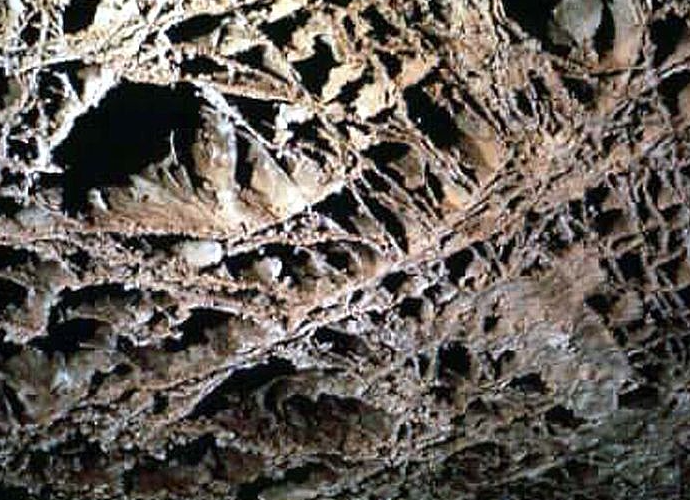
Wind Cave National Park
On January 9, 1903, President Theodore Roosevelt established Wind Cave National Park in South Dakota, the world’s first cave designated as a national park. It is named for the whistling, rushing noise of the wind at the mouth of the cave. The cave breathes in and out depending on changes to surface pressures above.
One of the world’s longest caves, it is a dramatic showcase of speleothems, “cave deposits” in Greek. Speleothems are different formations created from dissolved minerals found in cave ceilings, floors and the cave’s lake.
Seeping, leaking, or dripping groundwater dissolves calcite, a carbonate that is a natural ingredient in lime. If temperature and carbon dioxide levels are just right, the calcite forms a thin translucent coating or raft-like structure on shallow water. Calcite forms wall “popcorn” in places where dissolving calcite drips and splashes.

A special calcite formation forms spectacular “boxwork” – a honeycomb of thin fins or blades – in cave ceilings where softer bedrock has eroded leaving more resistant bedrock and harder calcite to protrude. Scientists, particularly paleontology specialists, investigate these formations as clues to past climatology, age-dating, and vegetation changes over hundreds of millennia.
Meanwhile on the ground surface of the park, an equally spectacular effort is in its hundredth year! This is the reclamation of prairie lands and the reintroduction of bison, pronghorn antelope, and other supporting wildlife. These animals are carefully monitored to maintain healthy herds in a restored and balanced mixed-grass prairie ecosystem and ponderosa pine forest.
A National Park Double-Decker!
B Bondar / Real World Content Advantage